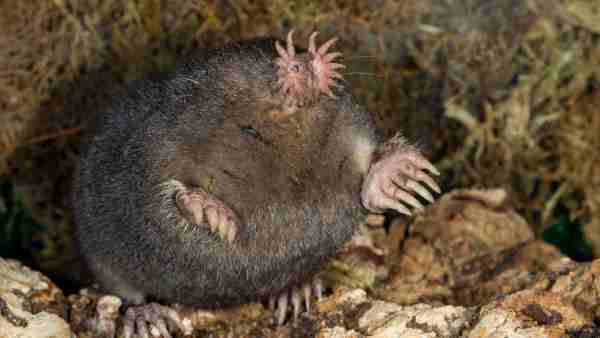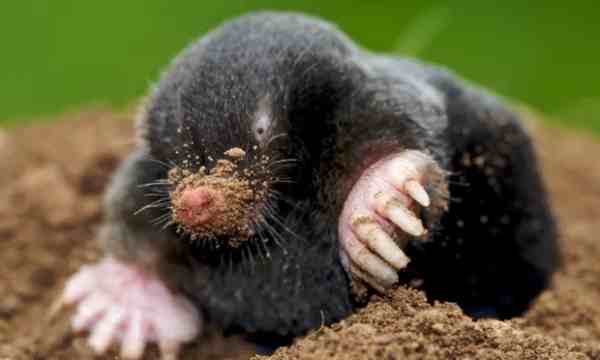Moles, those small, subterranean creatures known for their distinctive tunnels and mounds of earth, often spark curiosity and even concern. Stories of their tunneling habits and potential impact on lawns and gardens can sometimes contribute to a perception of moles as dangerous animals. But is this perception accurate, or is it shrouded in misconceptions?
In this article, we’ll delve into the world of moles, examining their behaviors, habitats, and interactions with humans to provide a clear understanding of whether moles pose a real danger or if they are misunderstood creatures in need of a closer look. Join us as we uncover the truth behind the myths and separate fact from fiction regarding Are Moles Dangerous.
Table of Contents
Understanding Moles:
Moles, fascinating creatures of the subterranean world, are small, cylindrical mammals known for their keen digging abilities and specialized physical features. With their velvety fur, small eyes, and powerful forelimbs equipped with shovel-like claws, moles are uniquely adapted to a life spent primarily underground.
Their tunneling behavior helps them hunt for insects and grubs, their main source of nutrition. Moles are generally solitary animals, preferring a solitary lifestyle in intricate tunnel networks where they live and breed. Understanding their biology, habits, and ecological role is essential to debunk any myths or misconceptions surrounding their supposed danger.
The Role of Moles in Ecosystems:
Moles, those subterranean architects of the animal kingdom, play a vital role in maintaining the health and balance of ecosystems. These seemingly unassuming creatures are nature’s engineers, and their presence in the soil has far-reaching effects. Moles are primarily insectivores, feasting on a diet of insects, larvae, and earthworms found in the soil. This insectivory serves an essential ecological function by helping to control insect populations. In doing so, moles indirectly benefit gardeners, farmers, and ecosystems as a whole by reducing potential crop damage and curbing pest populations.

Beyond their role as pest controllers, moles are true soil aerators. Their extensive tunnel systems break up compacted soil, improving its structure and facilitating better water infiltration. This aeration enhances nutrient cycling, making it easier for plants to access essential elements, ultimately boosting plant growth. The mole’s intricate network of tunnels also provides microhabitats for various soil organisms and can even serve as natural channels for water movement, helping to reduce erosion.
Furthermore, as moles move through the soil, they inadvertently distribute organic matter and plant seeds, promoting biodiversity by creating niches for other organisms and contributing to the overall health of the ecosystem. In essence, moles are unsung heroes in the subterranean world, demonstrating the intricate web of connections that underpins the natural world.
Common Misconceptions about Moles:
Moles are often the subject of misconceptions, with many of these misunderstandings fueling an unjust reputation as destructive pests. One common myth is that moles feed on plant roots, damaging lawns and gardens. In reality, moles primarily consume soil-dwelling insects and invertebrates, and while their tunneling may disturb plant roots, they do not directly feed on them.
Another misconception is that moles are blind. While their small eyes are adapted for sensing light and dark, moles are not blind. Their highly developed sense of touch, aided by sensitive whiskers, allows them to navigate their dark underground tunnels with precision.
Furthermore, the molehills and tunnels created by moles are often seen as unsightly and harmful to lawns, but these structures can actually benefit the soil. Molehills help to aerate the soil and distribute organic matter, enriching it and promoting healthy plant growth. Understanding these misconceptions is crucial for dispelling myths and adopting a more accurate perspective on these intriguing creatures.
Examining the Actual Threat Level Posed by Moles:
When it comes to assessing the threat level posed by moles, it’s important to separate fact from fiction. Moles are generally harmless to humans and pets. They do not carry diseases that can be transmitted to people or domestic animals, and they are not aggressive animals. While their tunneling activities can create surface damage, such damage is usually aesthetic and rarely poses significant harm.
The actual threat posed by moles to lawns and gardens depends on several factors, including the mole population density, the type of soil, and the specific plants in the area. In some cases, mole activity may be minimal and inconsequential, while in others, it may be more noticeable.
Understanding the extent of their impact and the actual threats they pose is crucial for developing appropriate management strategies that balance the needs of humans with the ecological role of moles in the ecosystem. In many instances, coexistence and responsible management practices can minimize any potential conflicts.

Methods for Managing Moles:
Managing moles requires a balanced approach that acknowledges their ecological significance while addressing potential concerns about their presence and activities. It’s important to adopt humane and responsible strategies that minimize harm and respect their role in the ecosystem.
- Habitat Modification: Modifying the habitat to discourage mole activity can be an effective non-lethal approach. This may involve reducing excess moisture in the soil, as moles are attracted to damp environments. Improving drainage and reducing overwatering can make the habitat less appealing to moles.
- Exclusion Techniques: Physical barriers and exclusion methods can redirect mole activity away from sensitive areas. Installing mesh or wire barriers underground can deter moles from burrowing into specific locations, such as gardens or lawns.
- Trapping and Relocation: Trapping is a humane method of managing mole populations when their presence becomes problematic. Live traps can capture moles, allowing for their safe relocation to suitable habitats away from human-inhabited areas.
- Integrated Pest Management (IPM): Implementing an integrated approach to mole management is essential. Combining various strategies, such as habitat modification, trapping, and monitoring, allows for effective control of mole populations while minimizing environmental impact.
- Professional Assistance: In situations where mole activity is persistent or causing significant issues, seeking assistance from wildlife or pest control professionals with expertise in humane mole management can provide effective solutions.
- Education and Awareness: Educating communities and individuals about the ecological importance of moles is crucial for fostering understanding and tolerance. Raising awareness about the role of moles as ecosystem engineers helps promote coexistence and informed decision-making.
Balancing Mole Management with Environmental Stewardship:
Finding a balance between mole management and environmental stewardship is essential for promoting coexistence and ensuring the ecological health of the ecosystem. Responsible mole management practices should prioritize the preservation of their role as soil engineers and pest controllers.
Conservation efforts should focus on minimizing harm and preserving the overall well-being of moles while effectively addressing any conflicts with human activities. This involves implementing management strategies that are environmentally friendly, humane, and considerate of their ecological significance.
By recognizing the valuable contributions of moles to soil health, nutrient cycling, and pest control, we can develop and advocate for management approaches that prioritize coexistence and respect for all species within the ecosystem. It’s crucial to promote a harmonious balance that allows moles to fulfill their ecological role while minimizing any adverse effects on human interests, ultimately fostering a sustainable and thriving cohabitation.
Final Words:
Moles, often misunderstood and misjudged, are integral contributors to the health and functionality of ecosystems. It is essential to educate ourselves about their behavior, habits, and ecological significance to dispel misconceptions and promote responsible management. Striking a balance between addressing potential concerns and appreciating their role as ecosystem engineers is crucial for coexisting with moles sustainably. Let us embrace an informed perspective, acknowledging moles’ importance in the intricate tapestry of our environment.
Reference:
- https://www.wil-kil.com/pests/pest-info-library/wildlife/moles-2
- https://www.sttiggywinkles.org.uk/moles-fact-sheet
- https://mom.com/momlife/19914-venomous-mammals

Zahra Makda
Growing up enjoying the beauty of my village, a good passion for nature developed in me from childhood. Following my passion for the natural world, I have chosen zoology for my graduation, during my undergraduate degree, I participated in many nature trails, bird watching, rescues, training for wildlife conservation, workshop, and seminars on biodiversity. I have a keen interest in invertebrate biology, herpetology, and ornithology. Primary interests include studies on taxonomy, ecology, habitat and behavior.









